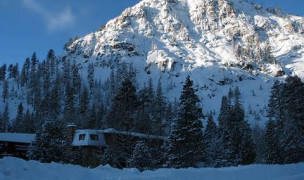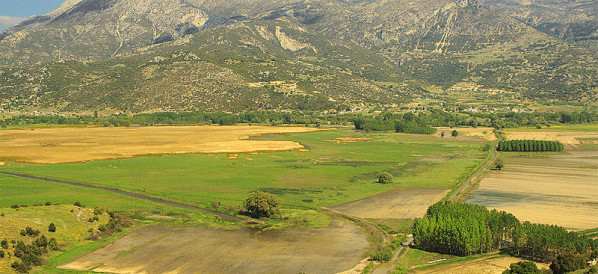 9 Terms
9 TermsHome > Terms > English (EN) > chocolate
chocolate
The word "chocolate" comes from the Aztec xocolatl, meaning "bitter water. " Indeed, the unsweetened drink the Aztecs made of pounded cocoa beans and spices was probably extremely bitter. Bitterness notwithstanding, the Aztec king Montezuma so believed that chocolate was an aphrodisiac that he purportedly drank 50 golden goblets of it each day. Chocolate comes from the tropical cocoa bean, Theobroma ("food of the gods") cacao. After the beans are removed from their pods they're fermented, dried, roasted and cracked, separating the nibs (which contain an average of 54 percent cocoa butter) from the shells. The nibs are ground to extract some of the cocoa butter (a natural vegetable fat), leaving a thick, dark brown paste called chocolate liquor. Next, the chocolate liquor receives an initial refining. If additional cocoa butter is extracted from the chocolate liquor, the solid result is ground to produce unsweetened cocoa powder. If other ingredients are added (such as milk powder, sugar, etc. ), the chocolate is refined again. The final step for most chocolate is conching, a process by which huge machines with rotating blades slowly blend the heated chocolate liquor, ridding it of residual moisture and volatile acids. The conching continues for 12 to 72 hours (depending on the type and quality of chocolate) while small amounts of cocoa butter and sometimes lecithin are added to give chocolate its voluptuously smooth texture. Unadulterated chocolate is marketed as unsweetened chocolate, also called baking or bitter chocolate. U. S. standards require that unsweetened chocolate contain between 50 and 58 percent cocoa butter. The addition of sugar, lecithin and vanilla (or vanillin) creates, depending on the amount of sugar added, bittersweet, semisweet or sweet chocolate. Bittersweet chocolate must contain at least 35 percent chocolate liquor; semisweet and sweet can contain from 15 to 35 percent. Adding dry milk to sweetened chocolate creates milk chocolate, which must contain at least 12 percent milk solids and 10 percent chocolate liquor. Though bittersweet, semisweet and sweet chocolate may often be used interchangeably in some recipes with little textural change, milk chocolate — because of the milk protein — cannot. Liquid chocolate, developed especially for baking, is found on the supermarket shelf alongside other chocolates. It's unsweetened, comes in individual 1-ounce packages, and is convenient because it requires no melting. However, because it's made with vegetable oil rather than cocoa butter, it doesn't deliver either the same texture or flavor as regular unsweetened chocolate. Couverture is a term describing professional-quality coating chocolate that is extremely glossy. It usually contains a minimum of 32 percent cocoa butter, which enables it to form a much thinner shell than ordinary confectionery coating. Couverture is usually only found in specialty candy-making shops. White chocolate is not true chocolate because it contains no chocolate liquor and, likewise, very little chocolate flavor. Instead, it's usually a mixture of sugar, cocoa butter, milk solids, lecithin and vanilla. Read the label: if cocoa butter isn't mentioned, the product is confectionery (or summer) coating, not white chocolate. Beware of products labeled artificial chocolate or chocolate-flavored. They are, just as the label states, not the real thing and both flavor and texture confirm that fact. Chocolate comes in many forms, from 1-ounce squares to 1/2-inch chunks to chips ranging in size from 1/2 to 1/8 inch in diameter. Many chocolate chunks and chips come in flavors including milk, semisweet, mint-flavored and white chocolate. Chocolate should be stored, tightly wrapped, in a cool (60° to 70°F), dry place. If stored at warm temperatures, chocolate will develop a pale gray "bloom" (surface streaks and blotches), caused when the cocoa butter rises to the surface. In damp conditions, chocolate can form tiny gray sugar crystals on the surface. In either case, the chocolate can still be used, with flavor and texture affected only slightly. Under ideal conditions, dark chocolate can be stored 10 years. However, because of the milk solids in both milk chocolate and white chocolate, they shouldn't be stored for longer than 9 months. Because all chocolate scorches easily — which completely ruins the flavor — it should be melted slowly over low heat. One method is to place the chocolate in the top of a double boiler over simmering water. Remove the top of the pan from the heat when the chocolate is a little more than halfway melted and stir until completely smooth. Another method is to place the chocolate in a microwave-safe bowl and, in a 650- to 700-watt microwave oven, heat at 50 percent power. Four ounces of chocolate will take about 3 minutes, but the timing will vary depending on the oven and the type and amount of chocolate. Though chocolate can be melted with liquid (at least 1/4 cup liquid per 6 ounces chocolate), a single drop of moisture in melted chocolate will cause it to seize (clump and harden). This problem can sometimes be corrected if vegetable oil is immediately stirred into the chocolate at a ratio of about 1 tablespoon oil to 6 ounces chocolate. Slowly remelt the mixture and stir until once again smooth. See also chocolate syrup; gianduja chocolate; mexican chocolate; tempering.
- Part of Speech: noun
- Synonym(s):
- Blossary:
- Industry/Domain: Culinary arts
- Category: Cooking
- Company: Barrons Educational Series
- Product:
- Acronym-Abbreviation:
Other Languages:
Member comments
Terms in the News
Billy Morgan
Sports; Snowboarding
The British snowboarder Billy Morgan has landed the sport’s first ever 1800 quadruple cork. The rider, who represented Great Britain in the 2014 Winter Olympics in Sochi, was in Livigno, Italy, when he achieved the man-oeuvre. It involves flipping four times, while body also spins with five complete rotations on a sideways or downward-facing axis. The trick ...
Marzieh Afkham
Broadcasting & receiving; News
Marzieh Afkham, who is the country’s first foreign ministry spokeswoman, will head a mission in east Asia, the state news agency reported. It is not clear to which country she will be posted as her appointment has yet to be announced officially. Afkham will only be the second female ambassador Iran has had. Under the last shah’s rule, Mehrangiz Dolatshahi, a ...
Weekly Packet
Language; Online services; Slang; Internet
Weekly Packet or "Paquete Semanal" as it is known in Cuba is a term used by Cubans to describe the information that is gathered from the internet outside of Cuba and saved onto hard drives to be transported into Cuba itself. Weekly Packets are then sold to Cuban's without internet access, allowing them to obtain information just days - and sometimes hours - after it ...
Asian Infrastructure Investment Bank (AIIB)
Banking; Investment banking
The Asian Infrastructure Investment Bank (AIIB) is an international financial institution established to address the need in Asia for infrastructure development. According to the Asian Development Bank, Asia needs $800 billion each year for roads, ports, power plants or other infrastructure projects before 2020. Originally proposed by China in 2013, a signing ...
Spartan
Online services; Internet
Spartan is the codename given to the new Microsoft Windows 10 browser that will replace Microsoft Windows Internet Explorer. The new browser will be built from the ground up and disregard any code from the IE platform. It has a new rendering engine that is built to be compatible with how the web is written today. The name Spartan is named after the ...
Featured Terms
Contributor
Featured blossaries
afw823
0
Terms
10
Blossaries
2
Followers
Top Ski Areas in the United States
 9 Terms
9 Terms
Browers Terms By Category
- Architecture(556)
- Interior design(194)
- Graphic design(194)
- Landscape design(94)
- Industrial design(20)
- Application design(17)
Design(1075) Terms
- Manufactured fibers(1805)
- Fabric(212)
- Sewing(201)
- Fibers & stitching(53)
Textiles(2271) Terms
- Characters(952)
- Fighting games(83)
- Shmups(77)
- General gaming(72)
- MMO(70)
- Rhythm games(62)
Video games(1405) Terms
- Hats & caps(21)
- Scarves(8)
- Gloves & mittens(8)
- Hair accessories(6)
Fashion accessories(43) Terms
- World history(1480)
- Israeli history(1427)
- American history(1149)
- Medieval(467)
- Nazi Germany(442)
- Egyptian history(242)




